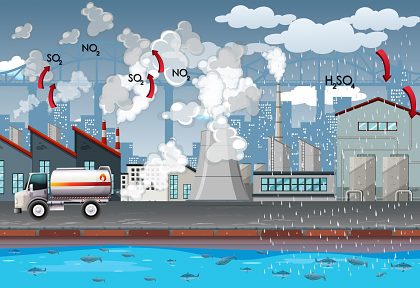
The Slovak Republic Informative Inventory Report (SK IIR) is an official document accompanying the emission inventory submission of the Slovak Republic under the Convention on Long-Range Transboundary Air Pollution (LRTAP Convention). Since the Directive (EU) 2016/2284 on the reduction of national emissions of certain atmospheric pollutants (NECD) was adopted, this report represents also the official document as required in the new NEC Directive.. Along with the report, the time series for the years 1990 – x-2 are also submitted.
NOx have a constantly decreasing trend and do not exceed the emission ceilings set up in NEC Directive 2001/81/EC for 2010. Since the year 2005, emissions decreased by 42% which means the Slovak Republic reached its National Commitment for this pollutant, set by NEC Directive 2016/22848/EU for the period 2020-2029. Road transport remains the main contributor to this pollutant throughout the whole time-series and emissions in this subsector are decreasing only slowly.
Emissions of NMVOC have a decreasing trend in the whole time-series although the most significant decrease occurred in the period 1990-2000. The main source of NMVOCs in the Slovak Republic is residential heating sources, which produced 37% of total NMVOCs emission in 2020. The decrease in the period 1990-2000 was caused primarily by a decrease in energy demand in the households, which reconstructed their houses and also an increase in the energy effectiveness of boilers.
The trends of SOx emission decreased until 2014 continually. Since 1990 SOx emissions have noticed a significant decrease due to strict air protective legislation. The downward trend relates also to the composition of the fuel used in all sectors and related legislative limitations. In 2015, however, there was a significant increase. These emissions came from the source of Slovenské elektrárne (SE), especifically from the Nováky coal powerplant. Apparently, SE used the last year of special exception (max.20 000 hours of operation from 1.1.2008 to 31.12.2015), for not applying any emission limits and abatement technology Subsequently, in 2016, emissions dropped significantly.
The overall trend of emission inventory for ammonia (NH3) from 1990 has a stable decreasing tendency until 2011. The following years until 2015 show a slight increase and the major driver for this change was an increase in the number of animals and application of the inorganic N-fertilized into soils.
The emission trend of PM2.5 is significantly affected by the emission trend of the category Residential heating. This category produced more than 82% of total PM2.5 emissions in the Slovak Republic in the year 2020. Emissions in this category are connected to the energy demand of households, which is influenced by several conditions, such as climate factor, reconstruction status of buildings etc.

